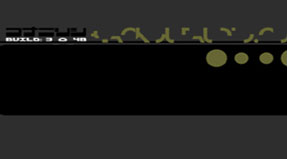zing!
Welcome to the Blackout Audio Techno Forums :: Underground Network.
 |
 |
 |
 |
Results 21 to 40 of 42
Thread: Dan Bell
-
22-10-2009, 04:31 PM #21

-
22-10-2009, 06:53 PM #22BOA Lifetime Member

- Join Date
- Mar 2004
- Posts
- 2,994
-
22-10-2009, 08:47 PM #23

no, I do on occasion, although rarely, listen to old stuff.
It`s just with techno changing so much in the last few years, lots of poeople have been going on about "the good old days" and it just says more about an aging generation of ravers turning into their dads.
I`m just having a bit of a groan that`s all.
I blame James Ruskin, he knows I invented the name James Ruskin, without me he would be nothing.I am not here but my ghost still lingers
-
22-10-2009, 09:00 PM #24

On the contrary, my life is immersed and infused with music and I spend a great deal of time learning all types of techniques and methods.
Minimalism is something that was about purity of note, texture, and harmonic complexity within apparently simple arrangement.
The 12 tone system for example, was very influencial on the minimalists.
With each of the 12 tones in the chromatic scale being given equal emphasis in a piece.
This changed the way the music was made, from being about what is being played, to how it is being played and the texture and timbre, and shifitng time signatures in sublte, almost invisible ways.
Like with glass for example, he asked much from his performers, not so much the notes, but the purity they were extracted from the violin for example.
Constant pressure and smooth bowing for mazimum purity of note.
Part was similar, his early works are notoriously difficult to play, not for their tonal complexity, but for the texture he required his violinists and cellists to get from their instruments. IT required supreme mastery of the instrument, and certain non conventional techniques that ,as they were used from a minimalistic ethic, gave an illusion of simplicity.
These are just small areas of what minimalism was about.
For me, it seems that Hood was influenced by minimalism, but didn`t quite get it, wether he lacked the technical knowledge or skill to reproduce it, or just didn`t fully understand the ethic. The tones he used lacked any real textural or harmonic depth. The structure was minimal, but remained too rigid, and although polyrythmic, lacked fluidity. I think part of the lack of textural depth may be purely down to the limitations of what he had available to him as well, equipment-wise.
Probably as he himself was trying something new, so it didn`t fully succeed, but for me, what he did has little merit in minimal-ISM.
I`m a full on music nerd, I think about these things, possibly too much, but it`s one of the reasons I have starting writing classical pieces, to more fully understand the beautiful maths behind music.I am not here but my ghost still lingers
-
22-10-2009, 09:14 PM #25

fair doo's, know what you mean really whats the point looking back when you can look forward kinda thing. your view is probably different to alot of us as u actually make music, so you have to lok forward.
thing is though there is just so much amazing stuff from ' back in the day' that you just simply cannot ignore and still sounds just as good if not better now!
good music is timeless.
-
22-10-2009, 09:26 PM #26

dammit steve, always on about the details, f4cking up the music for the rest of us...
-
23-10-2009, 01:41 AM #27

plenty of classical minimalism is about small vocabularies of relatively "unaltered" tones, e.g. john cage's "string quartet in four parts," (which is really worth checking out, if you don't already know it), or shifting patterns of short repeated tones, like "in c" or "music for 18 musicians." that's exactly what rob hood was doing, albeit in a far more superficial way than said composers. but hey...all techno is superficial compared to the giants of contemporary classical. by the bar set by classical minimalism, virtually all "minimal" electronic music is "kiddie minimalism." but nothing wrong with that...just the nature of the beast.
Last edited by SlavikSvensk; 23-10-2009 at 01:45 AM.
The law is not the private property of lawyers, nor is justice the exclusive province of judges and juries. In the final analysis, true justice is not a matter of courts and law books, but of a commitment in each of us to liberty and mutual respect. - Jimmy Carter
-
23-10-2009, 06:09 AM #28
-
23-10-2009, 06:11 AM #29

Oh I agree, for sure.
Techno has always been a very transient artform though.
I think it is so closely related to the zeitgeist (or at least it should be) it can become irrelevant pretty quickly.
Yes my perspective is different, I`m very much into all aspects of music, in being so deep into the mechanics of it, it`s very hard to not pull things apart and look at them from the inside, which often gives an extreme nerd perspective to the outsider.
My belief is you you find your passion and you have the ability, then go all the way, get right inside.Last edited by The_Laughing_Man; 23-10-2009 at 06:15 AM.
I am not here but my ghost still lingers
-
23-10-2009, 06:20 AM #30

not really, there is plenty of electronic music that more captures the detail and ethic of minimalism fairly effectively, yet still within the post african rhythm context.
More so in the last 10 years than before.
Hood was just an early explorer (only comparitively, within his own niche of electronica)
What he did is like a an old Ford Model T in a museum compared to a Koenigsegg CCX Edition (In black of course).I am not here but my ghost still lingers
-
23-10-2009, 11:00 AM #31

so anyway, ahem, dan bell....
-
23-10-2009, 11:22 AM #32

that first tune slav posted is quality, been wondering the name of that for ages, heard it on sets in the past. gotta love them people jiveing also!
-
23-10-2009, 11:35 AM #33

yeah, Daniel Bell, Seventh City Detroit,. liking his stuff alot,. heard him for the first time around 2000 on one vienna radio station called FM4. showcase is called La Boom Deluxe, not sure anyone of you will know it, but for us middle european people FM4 played big role back in the days. at least for me it did, hahaha.
really likining Dan Bell tunes, easy listening minimal music with soul and emotional energy, not like the lettradethe808samplepack mnml crap which coming out these days. thumps up."Computer games don't affect kids, I mean if Pac Man affected us as kids, we'd all run around in a darkened room munching pills and listening to repetitive music."
-Kristian Wilson, Nintendo Inc
-
23-10-2009, 05:10 PM #34

but it is kid stuff, really, and not a lot more. there's certainly a place for that, and it has value, but it's like comparing graffiti art to dan flavin. minimal electronic music should be appreciated for what it is, but pretentions to transcendence are misplaced, and obviously so when compared to classical minimalism.
The law is not the private property of lawyers, nor is justice the exclusive province of judges and juries. In the final analysis, true justice is not a matter of courts and law books, but of a commitment in each of us to liberty and mutual respect. - Jimmy Carter
-
23-10-2009, 05:20 PM #35

i agree with a lot of this. it's simple, but its 90s techno stripped down to its most functional parts. some sounds dated (in a "i wouldn't really play this out anymore" way) now, some still rocks like it always did.
here's one i always loved that threads that needle...
http://samples.beatport.com/items/vo...04367.LOFI.mp3
...and a more experimental tune...sounds awfully weird to listen to now
http://samples.beatport.com/items/vo...04355.LOFI.mp3The law is not the private property of lawyers, nor is justice the exclusive province of judges and juries. In the final analysis, true justice is not a matter of courts and law books, but of a commitment in each of us to liberty and mutual respect. - Jimmy Carter
-
23-10-2009, 05:26 PM #36

I love dan bell stuff.
But I kinda suspect a lot of his stuff - if it was released today - would get dismissed as crap by a lot of the same people who hail it as genius.
-
23-10-2009, 05:32 PM #37

I think one point to note is that most of his tracks have a good fat drum under it which gives it the extra attitude and vibe. I think that's lacking in a lot of modern day mnml; the bass drums are often quite weak and lightweight. Bell's tracks can sound a bit dated, or a bit too basic, but at the same time they can also have a really ballsy, confident sound to them which really boosts them.
Last edited by teknorich; 23-10-2009 at 05:37 PM.
-
23-10-2009, 05:37 PM #38

well, it's quite primitive by today's standards. things that were groundbreaking then are commonplace, or in some ways, cliche now. his music also reflects a different time when there was a different prevalent mentality in techno. it was much more open and less compartmentalized, and there was just less stuff to take in. but there was also less cumulative knowledge about what things "should" be like. as i see it, that knowledge has both a positive and a negative side to it. it's just a different climate now.
i think when people today celebrate someone like dan bell, they are doing so both because he made some great music, and because he broke ground in a way that helped set the stage for lots of quality stuff that came later.The law is not the private property of lawyers, nor is justice the exclusive province of judges and juries. In the final analysis, true justice is not a matter of courts and law books, but of a commitment in each of us to liberty and mutual respect. - Jimmy Carter
-
24-10-2009, 12:29 AM #39

The thing with minimal stuff of today, is that the kicks are less obvious at home, as they tend to be compressed 808 type stuff.
No obvious bang bang that knocks your speakers at home, but those soft sounding 808`s have a big lump of sub in them, then a little click on top. Once they are pumped out on a good stack of 18`s or 24`s they shake the room to bits. You just need to give them room.
Immersion (or henry) used to use those kind of kicks to really amazing effect on pounding grooves.
I`ve kinda got bored of the 909 thump myself, but it does have more immediacy for sure.
Bell seems to have gone silent for the last few years production wise, is he using a pseudonym now?I am not here but my ghost still lingers
-
24-10-2009, 12:45 AM #40

he hasn't put out a new record in years, as far as i know. martin will probably talk him into a dust science record eventually, like he did with fred giannelli...at least i hope so.
The law is not the private property of lawyers, nor is justice the exclusive province of judges and juries. In the final analysis, true justice is not a matter of courts and law books, but of a commitment in each of us to liberty and mutual respect. - Jimmy Carter


 Reply With Quote
Reply With Quote
